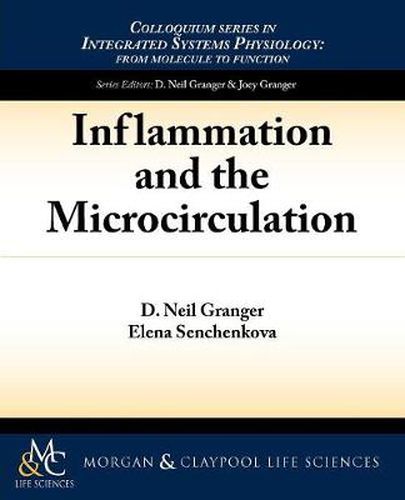Readings Newsletter
Become a Readings Member to make your shopping experience even easier.
Sign in or sign up for free!
You’re not far away from qualifying for FREE standard shipping within Australia
You’ve qualified for FREE standard shipping within Australia
The cart is loading…






The microcirculation is highly responsive to, and a vital participant in, the inflammatory response. All segments of the microvasculature (arterioles, capillaries, and venules) exhibit characteristic phenotypic changes during inflammation that appear to be directed toward enhancing the delivery of inflammatory cells to the injured/infected tissue, isolating the region from healthy tissue and the systemic circulation, and setting the stage for tissue repair and regeneration. The best characterized responses of the microcirculation to inflammation include impaired vasomotor function, reduced capillary perfusion, adhesion of leukocytes and platelets, activation of the coagulation cascade, and enhanced thrombosis, increased vascular permeability, and an increase in the rate of proliferation of blood and lymphatic vessels. A variety of cells that normally circulate in blood (leukocytes, platelets) or reside within the vessel wall (endothelial cells, pericytes) or in the perivascular space (mast cells, macrophages) are activated in response to inflammation. The activation products and chemical mediators released from these cells act through different well-characterized signaling pathways to induce the phenotypic changes in microvessel function that accompany inflammation. Drugs that target a specific microvascular response to inflammation, such as leukocyte-endothelial cell adhesion or angiogenesis, have shown promise in both the preclinical and clinical studies of inflammatory disease. Future research efforts in this area will likely identify new avenues for therapeutic intervention in inflammation.
$9.00 standard shipping within Australia
FREE standard shipping within Australia for orders over $100.00
Express & International shipping calculated at checkout
The microcirculation is highly responsive to, and a vital participant in, the inflammatory response. All segments of the microvasculature (arterioles, capillaries, and venules) exhibit characteristic phenotypic changes during inflammation that appear to be directed toward enhancing the delivery of inflammatory cells to the injured/infected tissue, isolating the region from healthy tissue and the systemic circulation, and setting the stage for tissue repair and regeneration. The best characterized responses of the microcirculation to inflammation include impaired vasomotor function, reduced capillary perfusion, adhesion of leukocytes and platelets, activation of the coagulation cascade, and enhanced thrombosis, increased vascular permeability, and an increase in the rate of proliferation of blood and lymphatic vessels. A variety of cells that normally circulate in blood (leukocytes, platelets) or reside within the vessel wall (endothelial cells, pericytes) or in the perivascular space (mast cells, macrophages) are activated in response to inflammation. The activation products and chemical mediators released from these cells act through different well-characterized signaling pathways to induce the phenotypic changes in microvessel function that accompany inflammation. Drugs that target a specific microvascular response to inflammation, such as leukocyte-endothelial cell adhesion or angiogenesis, have shown promise in both the preclinical and clinical studies of inflammatory disease. Future research efforts in this area will likely identify new avenues for therapeutic intervention in inflammation.